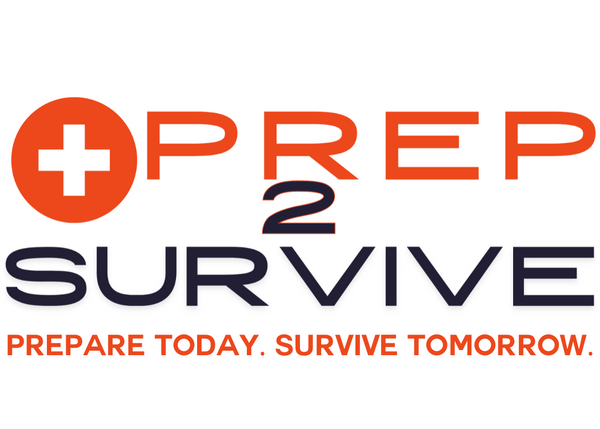
13 First Aid Skills Every Prepper Needs to Know (Before It’s Too Late)
Let’s be real: after a disaster, you won’t be able to DoorDash a medic.
When stuff hits the fan, your skills are what’s going to save your butt—not just your stash of freeze-dried chili and duct tape. Sure, a packed bug-out bag is great (and we love a good gear haul), but if you don’t know how to use your first aid kit, you might as well be carrying makeup brushes.
Disasters bring chaos—broken glass, fires, collapsed buildings, downed power lines, panicked people. Injuries are almost guaranteed. And when emergency services are overwhelmed or flat-out unavailable, it’s up to you to step in like a boss.
So if you're in the Stay Ready Circle, or even just prepping-curious, let’s get into the 13 first aid skills you’ve absolutely got to learn—no medical degree required.
1. CPR (a.k.a. Pushing on the Heart, Not Giving Make-Outs)
Gone are the days of mouth-to-mouth unless you're trained and the situation calls for it. These days, it's all about hands-only CPR. Think strong, steady chest compressions—about 100 to 120 per minute. It keeps the blood moving until help arrives… or until YOU become the help.
2. Splinting Like a Survival Surgeon
Someone takes a tumble and can’t move their arm? You better know how to splint it. Grab a stick, a towel, your bandana—whatever you’ve got—and immobilize that limb. Bad splints mean broken bones heal wrong. And in the wild, that’s not just inconvenient, it’s dangerous.
3. Wound Cleaning & Dressing (Not Just for Zombies)
Whether it's a rusty nail or a flying piece of debris, open wounds are trouble. Learn how to clean with clean water, use antiseptics, and dress wounds with gauze, tape, or butterfly closures. Skip this, and you're playing roulette with infection.
4. Heimlich Maneuver (When Coughing Isn’t Cutting It)
If someone’s choking, you have seconds to act. Back slaps are not enough. Learn the Heimlich—it’s basically a hug with purpose. Quick upward thrusts from behind can dislodge food or objects fast.
5. Treating Shock (No, Not the "OMG" Kind)
Shock can sneak up after trauma, even if the injury looks minor. Pale skin, confusion, fast breathing—it’s all a red flag. Get the person warm, calm, and flat with legs elevated. You’re helping their body stabilize when it’s losing its mind.
6. Stop the Bleed
Blood belongs inside the body, period. If someone’s leaking like a horror movie, apply pressure, elevate the wound, and grab that tourniquet if it's life-or-death. Learn to identify an arterial bleed—it’s bright red, spurting, and means you’ve got minutes.
7. Hypothermia: More Than Just Being Cold
Even in 50-degree weather, hypothermia can hit hard. Look for shivering, slurred speech, fumbling hands. Get the person warm, dry, and sheltered. Strip off wet clothes and insulate with whatever you’ve got—mylar blankets, sleeping bags, even body heat. (Hey, no judgment. Stay alive.)
8. Hyperthermia: When You’re Cooking from the Inside
Also known as heat stroke, and it’s just as scary as freezing. Symptoms include red, hot skin, dizziness, confusion, and nausea. Cool ‘em down fast: shade, water, cold packs, damp cloths. And if they stop sweating? That’s bad. Like, 911-if-you-could-call-it bad.
9. Burn Treatment (Not the Verbal Kind)
Whether it’s fire, boiling water, or a hot metal pot—burns are common in emergencies. Cool the burn (not with ice), clean it, and cover it loosely with sterile gauze. Don’t pop blisters. And definitely don’t slap butter on it. This is survival, not a cookout.
10. Allergic Reactions: Know the Signs, Save a Life
From bee stings to food triggers, allergic reactions can escalate fast. Learn to spot hives, swelling, wheezing, or confusion, and know how to use an epinephrine auto-injector (aka EpiPen). Don’t have one? Benadryl is a backup, but time is not your friend.
11. Dehydration: The Silent Creep That’ll Take You Out
You can survive weeks without food, but only days without water. And symptoms like dry mouth, dark pee, dizziness, and fatigue can spiral fast. Keep oral rehydration salts in your kit, or make your own: 1 liter of water, 6 tsp sugar, ½ tsp salt. Hydration is not optional.
12. Resetting Dislocations (Carefully!)
Dislocations happen when bones get a little... adventurous. Shoulders are common culprits. If you know what you’re doing (and the joint isn’t fractured), a simple technique can relieve pain and prevent nerve damage. But careful—this isn’t an action movie.
13. Infection Watchdog Mode
Even a teeny scrape can turn into a red, swollen mess. Learn how to spot signs of infection—heat, pus, red streaks, foul odor. Know when to clean it, re-dress it, and if you have antibiotics in your kit, when to use them. Infection is sneaky and ruthless.
Wrap-Up: Knowledge Is the Real Flex
Having the right supplies is great—but if you don’t know how to use them, you’re not prepping. You’re hoarding.
So take a class. Watch a tutorial. Practice on a dummy (or your brave bestie). Whatever it takes—because when help is NOT on the way, you ARE the help.
Want more guides like this?
🔥 Join the Stay Ready Circle and grab your FREE 72-Hour Checklist at Prep2Survive.com
You’ll also get surprise giveaways, cheeky tips, and the confidence to run toward the chaos (not from it).
Pin this for later. Share it with your group chat. Because this kind of info? It’s priceless.
#StayReadyCircle #GirlGetItTogether #Prep2Survive #FirstAidTips #PreppingSkills #EmergencyReady #Survival101
